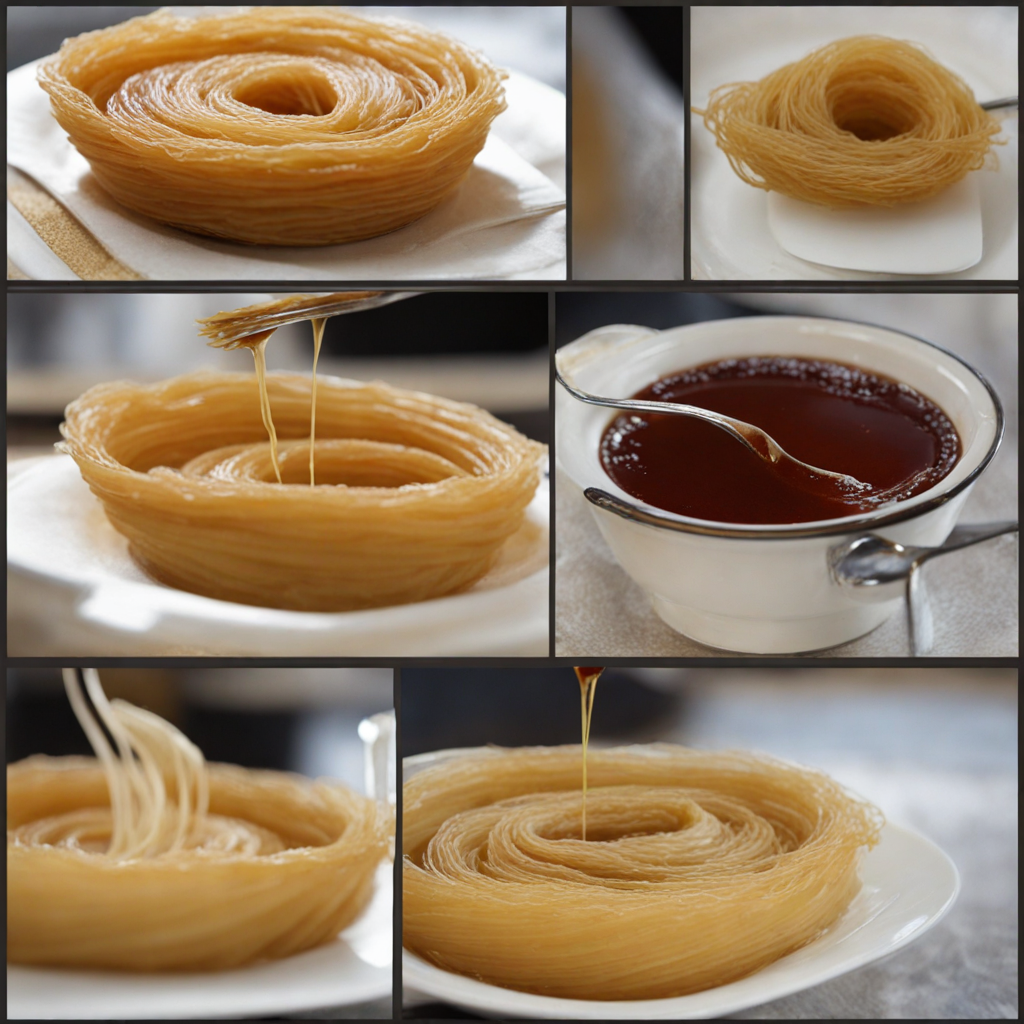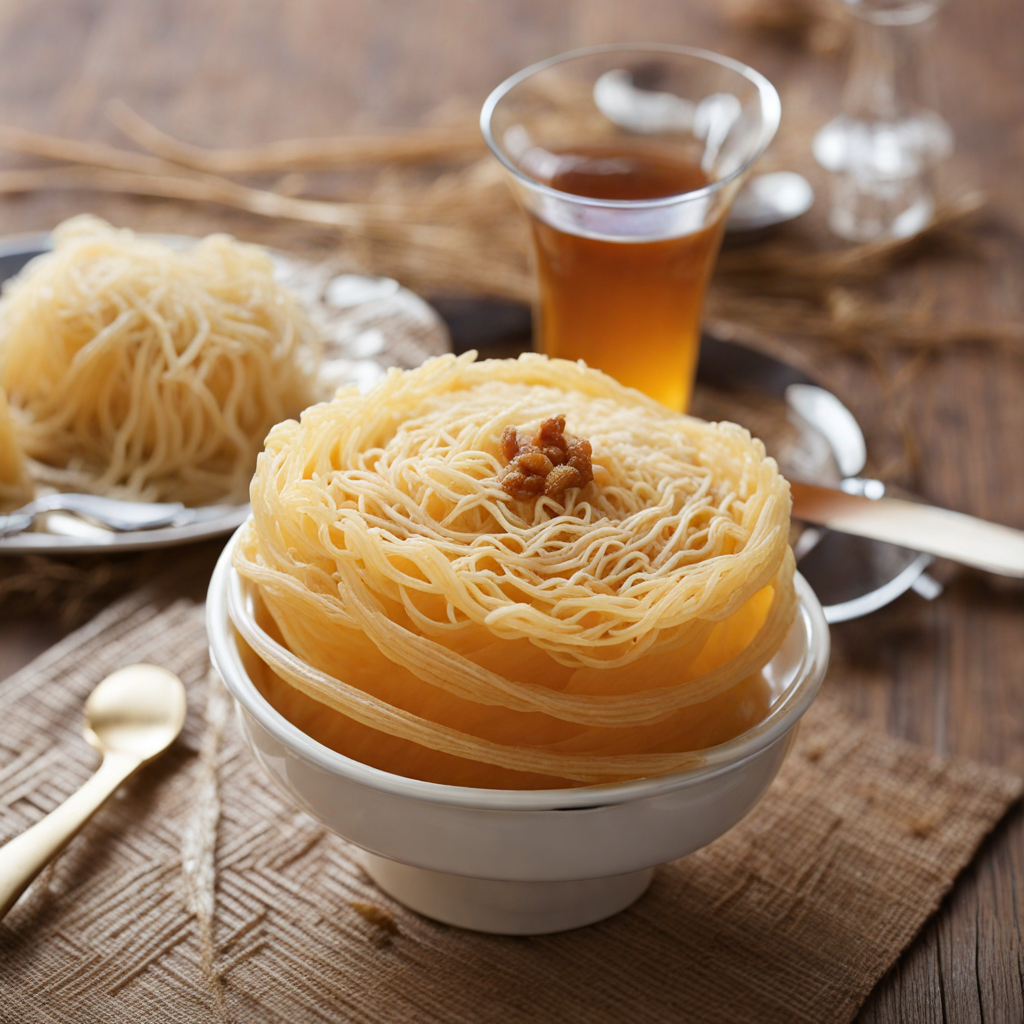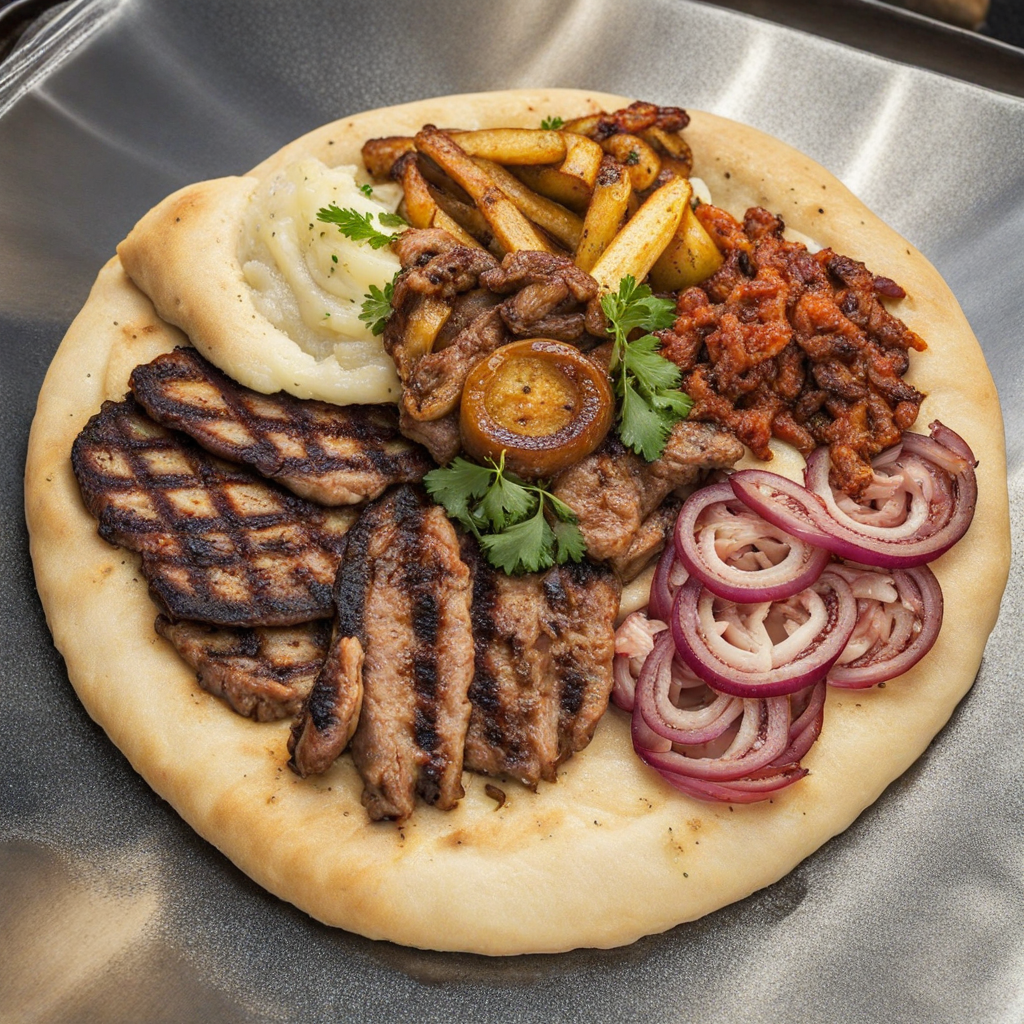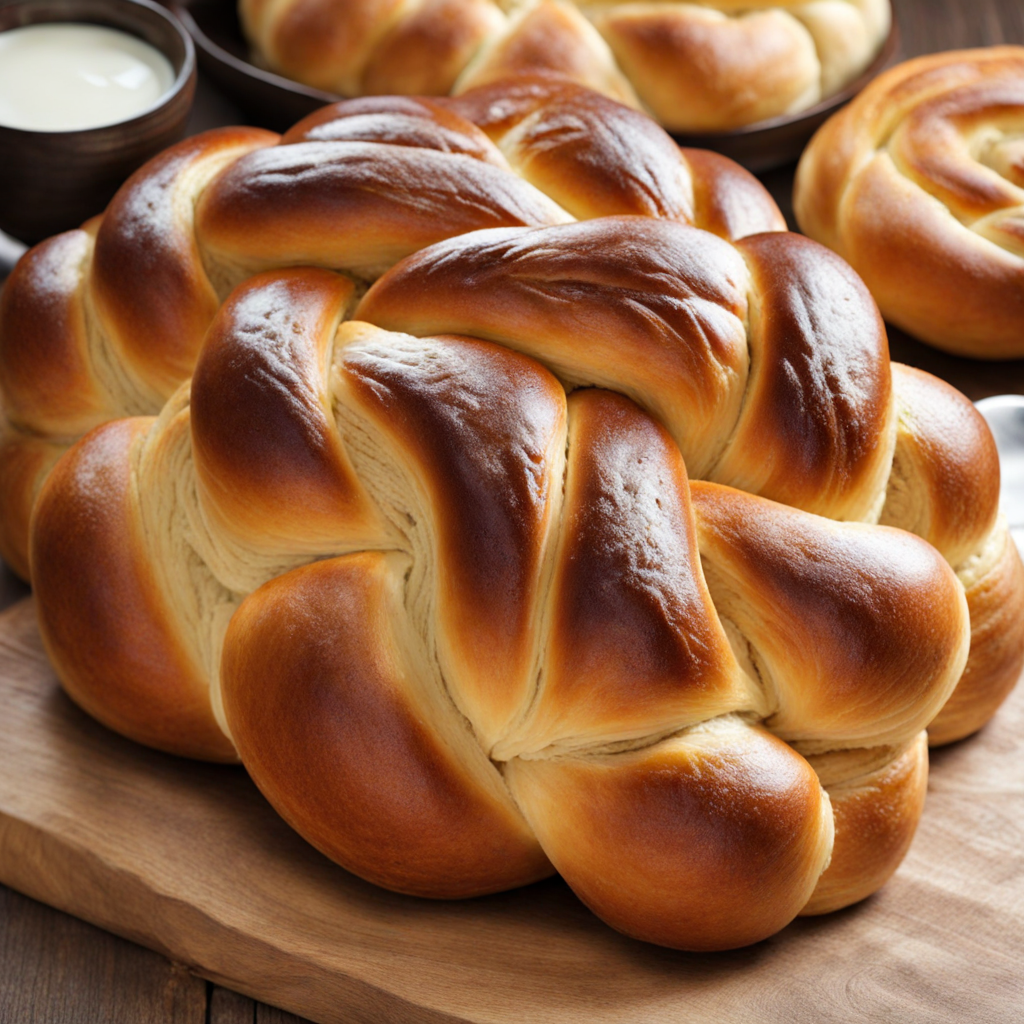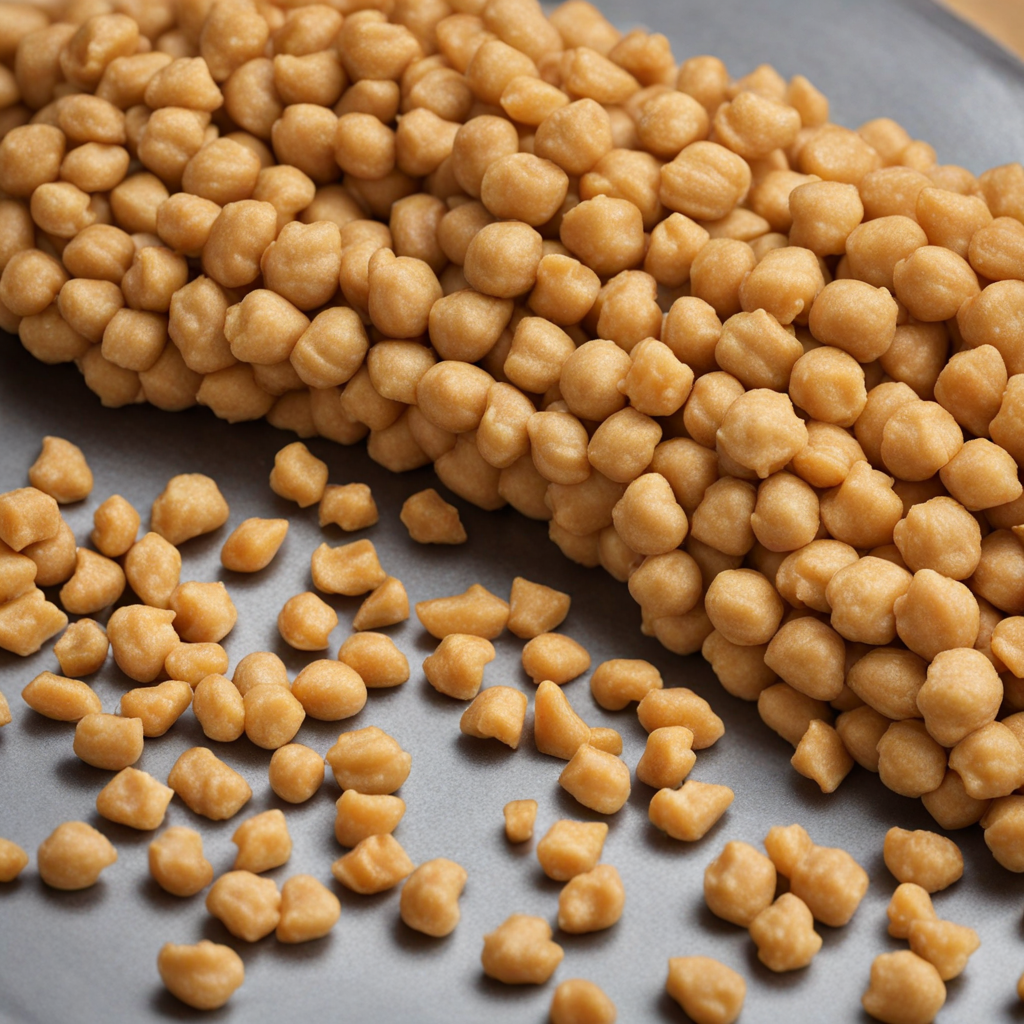Knaffe
Knaffe is a delightful Middle Eastern dessert that hails from the vibrant culinary landscape of Israel. This sweet treat consists of a delicate layer of shredded phyllo dough, known as kataifi, which is toasted to a golden brown and then soaked in a fragrant syrup made of sugar, water, and sometimes flavored with rose or orange blossom water. The outer layer is crisp and crunchy, providing a delightful contrast to the luscious and gooey filling that lies within. Traditionally, this filling is made with a blend of sweetened cheese, often a soft cheese like mozzarella or a similar variety that melts beautifully, creating a rich and creamy texture that will tantalize your taste buds. The preparation of Knaffe is an art in itself, as it requires a careful balance of flavors and textures. Once assembled, the dish is baked to perfection, allowing the kataifi to develop a crispy exterior while the cheese melts and becomes stretchy. After baking, the dessert is generously drizzled with the aromatic syrup, allowing it to seep into the layers, enhancing its sweetness and flavor profile. Often garnished with pistachios or other nuts, Knaffe not only offers a feast for the palate but also for the eyes, making it a perfect centerpiece for any gathering or celebration. When you take a bite of Knaffe, you experience an explosion of flavors and textures that is utterly unique. The first crunch of the toasted kataifi gives way to the gooey, sweet cheese, creating a harmony that is both satisfying and addictive. The subtle floral notes from the syrup elevate the dessert, making it a perfect balance of sweetness without being overwhelming. Enjoyed warm, Knaffe is often served with a side of yogurt or a dollop of cream, which adds a refreshing contrast and enhances the overall experience. This beloved Israeli dessert is not just a treat; it’s a celebration of culture and tradition that invites anyone to indulge in its glorious taste.
How It Became This Dish
Origin of Kanafeh Kanafeh, a beloved Middle Eastern dessert, has its origins deeply rooted in the culinary traditions of the Levant region, particularly in areas that today encompass modern-day Israel, Palestine, and neighboring countries. The exact origins of kanafeh are somewhat murky, but it is widely believed to date back to the Umayyad Caliphate in the 7th century. Historical texts indicate that it was originally served as a breakfast dish, made from simple ingredients like semolina, cheese, and sugar, reflecting the agricultural bounty of the region. The earliest known references to a dish similar to kanafeh can be traced to the city of Nablus in Palestine, which is often credited with the creation of the iconic Nabulsi kanafeh. This version features a distinctive, stretchy cheese called "Nabulsi cheese," which contributes to its unique texture and flavor. The dessert gained popularity in various forms throughout the Levant, with each region putting its unique twist on the dish, leading to a rich tapestry of flavors and preparations. \n\n Cultural Significance Kanafeh holds a special place in the hearts of many in the region, symbolizing hospitality and celebration. It is commonly served during festive occasions such as weddings, religious holidays, and family gatherings. The act of preparing kanafeh is often a communal affair, with families coming together to create this delicious treat. The preparation process itself is an art form, requiring skill and care to achieve the perfect balance of crispy and creamy textures. In Israel, kanafeh has transcended its traditional roots and has become a symbol of cultural fusion. The dessert can be found in various forms across the country, with numerous bakeries and restaurants offering their unique spins on the classic recipe. This reflects the broader narrative of coexistence in Israel, where diverse cultures and culinary traditions intermingle to create a vibrant food scene. As a result, kanafeh has become a beloved dessert for people of all backgrounds, often enjoyed regardless of cultural or religious differences. \n\n Development Over Time Over the centuries, kanafeh has evolved significantly, adapting to changing tastes and ingredients. While the original recipe featured a simple combination of semolina, sugar, and cheese, modern variations have emerged that incorporate a wider array of flavors and textures. In contemporary kitchens, one can find kanafeh made with shredded phyllo dough, known as "kataifi," which adds a delightful crunch to the dish. This adaptation highlights the influence of global culinary trends and the creativity of chefs who seek to innovate traditional recipes. Another significant evolution in the world of kanafeh is the introduction of various toppings and syrups. Traditional kanafeh is often drizzled with a sweet syrup made from sugar, water, and rose or orange blossom water, enhancing its fragrance and sweetness. However, modern interpretations may incorporate different flavorings, such as pistachio dust, chocolate, or even fruit, showcasing the versatility of the dessert and appealing to a wider range of palates. \n\n Regional Variations Kanafeh exists in many regional variations, each with its own distinct characteristics. In addition to the classic Nabulsi version, one can find the "Knafeh Nabulsieh," which features a more pronounced cheese flavor and is often topped with crushed pistachios. In contrast, the "Knafeh bil Jibn" from the city of Akko includes a rich mixture of cheese and semolina, resulting in a creamier texture. In Gaza, a unique version known as "Knafeh Gaza" is prepared with a special cheese made from sheep’s milk, giving it a richer flavor profile and a slightly different texture. This variation is often celebrated for its authenticity and is a staple during Ramadan, further emphasizing the cultural significance of kanafeh as a festive treat. \n\n Kanafeh in Contemporary Israel In Israel, kanafeh has become a culinary staple enjoyed by people from all walks of life. Bakeries and street vendors serve freshly made kanafeh, often prepared in front of customers to showcase the skill involved in crafting this delicious dessert. The popularity of kanafeh has also led to the emergence of a vibrant café culture, where people gather to enjoy this classic dish alongside a cup of strong Arabic coffee or mint tea. The dessert's presence is not limited to traditional contexts; it has also found its way into fine dining establishments, where chefs experiment with modern presentations and innovative flavor combinations. This has allowed kanafeh to maintain its relevance in contemporary cuisine while honoring its rich cultural heritage. \n\n Global Influence As the global culinary landscape has expanded, kanafeh has made its way beyond the borders of the Middle East. It has gained popularity in various parts of the world, often appearing on menus in Middle Eastern restaurants and food festivals. The dessert's unique combination of textures and flavors has captivated the palates of food enthusiasts everywhere, leading to a growing interest in authentic Middle Eastern cuisine. In places like Europe and North America, kanafeh is often celebrated as part of cultural events that showcase Middle Eastern food and traditions. This global appreciation has fostered a greater understanding of the dish's cultural significance and has allowed people from different backgrounds to connect through food. As a result, kanafeh serves as a delicious ambassador of Middle Eastern culinary heritage, bridging gaps and fostering cultural exchange. \n\n Conclusion Kanafeh is more than just a dessert; it is a symbol of cultural identity, community, and culinary artistry. Its rich history, diverse regional variations, and modern adaptations reflect the dynamic nature of food as a reflection of society and tradition. As kanafeh continues to evolve and find its place in the global culinary scene, it remains a cherished part of the Levantine heritage—one that celebrates the richness of flavors and the joy of sharing food with others.
You may like
Discover local flavors from Israel


